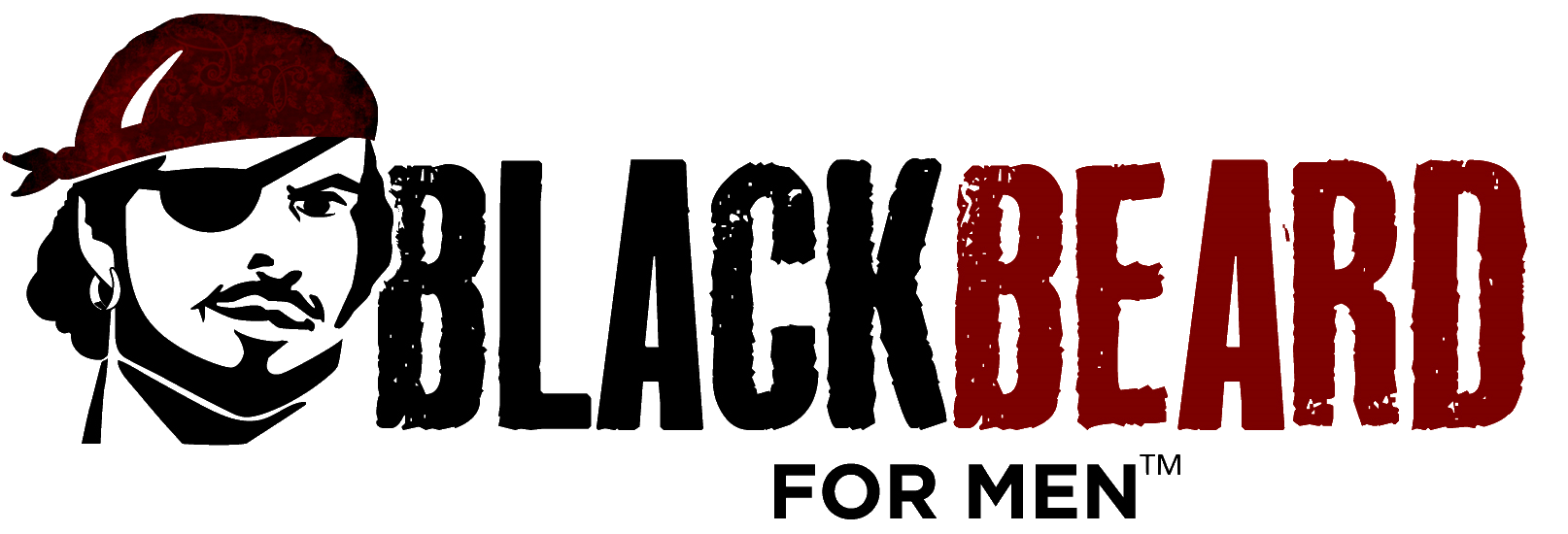Ahoy, Mateys!
Let’s tackle a more serious subject this week: the effect beard dyes can have on your body. Many of you already know why I created Blackbeard for Men – because my formerly roguishly handsome mug turned gray and made me look old. So I did what many of you have tried as well: I used beard dye. An experience I would rather forget.
I’m not talking about the acrid chemical stench, the hassle of putting it on, or the fact that the gray roots started to show after only a few days. I’m talking about the horrendous allergic reaction I suffered. My face turned itchy and red and I couldn’t leave the house without being mistaken for a pimply teen in a pirate geezer’s body.
Swashbucklers, below is a list of common ingredients in dyes and their potentially harmful effects on you:
Ammonia (!): In the olden days, pretty much every permanent hair and beard dye contained ammonia and many still do. Ammonia is used to open the hair cuticle, so the color can penetrate into the hair shaft. Inhalation of low doses of ammonia – mind ye, lads, LOW DOSES – causes coughing, nose, and throat irritation. Over time, it also causes olfactory fatigue – essentially, if you keep using products with ammonia in them, your early warning system gets turned off and you won’t be able to smell the dangerous chemical anymore (which, needless to say, can lead to dangers all of its own down the line). Skin or eye contact with low doses of ammonia can also cause rapid skin or eye irritation. (Yeah, I can attest to that fact.)
Buckle up, buccaneers, ‘cause here are the effects of HIGH DOSES of ammonia: destruction of the airways, respiratory failure, severe skin burns, permanent eye damage or blindness. Mind ye, dyes only use low doses of ammonia. But, mateys, use yer noggin — if those be the possible effects of ammonia, why would ye want to use it in any dosage? (https://www.health.ny.gov/environmental/emergency/)
Ethanolamine: This is often used as an alternative in ammonia-free products. Ethanolamine started out as a solvent in oven cleaners before its other uses were discovered. Now, pirate, let that sink in: yer putting oven cleaner on yer face – if yer using the supposedly kinder and gentler chemical compound. It works as an alkalizer, which boosts the hair’s ph levels, swelling the hair’s outer layer so the color can penetrate more fully. Well, mateys, fewer pirates seem to have allergic reactions to ethanolamine (although some still do) than ammonia. That’s the upside. The downside is that prolonged exposure to ethanolamine has been linked to cancer. The FDA did animal studies on this compound and found that it encourages the formation of tumors, and that prolonged exposure can result in liver, kidney or nervous system injury. And for ye pirate lassies who may encounter this chemical in hair dyes — it can cause developmental abnormalities to an unborn fetus. (http://www.ncbi.nlm.nih.gov/books/NBK208294/)
Resorcinol: The first two products are used to open the hair cuticle, so the dye can penetrate. That is what resorcinol does – it’s the compound that actually dyes the beard. Primarily, resorcinol is used by the rubber industry in the production of tires. (Now, mateys, don’t know about you, but my roguishly handsome goatee ain’t no rubber tire.) It’s also used in wood glues and chemical fertilizers. The EU Commission has done a report on common dye ingredients (http://europa.eu/rapid/press-release_IP-06-1047_en.htm) and found that evidence from case studies, animal studies and in vitro studies demonstrates that resorcinol disrupts thyroid function and that can manifest in hyperthyroidism and an enlargement of the thyroid gland also known as a goiter. Resorcinol is also acutely toxic if it’s consumed orally or used in high doses. Yum!
Para-phenylenediamine (PPD): Pirates, if ye can pronounce that correctly and quickly three times in a row, we’ll send ye a free tube of Blackbeard for Men. PPD is used as a dye for dark color shades and is made from coal tar, a petroleum-derived chemical that includes benzene, naphthalene, phenols, aniline, and other chemicals. It is also used as a wood preservative. In fact, one of the top questions we are regularly asked is, Does Blackbeard for men contain PPD? (Nope.)
According to a study done in Germany, PPD is the 5th most common skin allergen (http://www.safecosmetics.org/get-the-facts/chemicals-of-concern/p-phenylenediamine/#_edn9). It’s also linked to an increased risk of bladder cancer. When used together with hydrogen peroxide it can form a DNA-altering substance called Bandrowski’s Base. When ingested, it can cause respiratory distress and renal failure.
Lead Acetate: There are some “gradual change” or “progressive” hair- and beard dyes on the market. These brands will have you believe that they’re less damaging because any change happens gradually over a period of time. First of all, mateys, lead is a heavy metal (and, no, we’re not talking about the the good kind of heavy metal, like Motorhead or Ozzy, don’t ye know.) Ye all have read many articles about what heavy metals can do to a living organism, like yer body, for instance. Lead Acetate is used as a color additive for the dark shade hair dyes. It is said to cause anemia and produce neurological problems. (http://www.theepochtimes.com/n3/2040018-avoid-these-7-toxic-chemicals-found-in-most-hair-dyes/). It can also lead to serious health issues including cancer. Lead Acetate hair dyes actually can cause elevated lead levels throughout the homes of people who use them, triggering health issues for other family members, too. (http://bottomlineinc.com/danger-in-your-hair/)
Good stuff, eh?
+++
Of course, when I first started looking for ways to keep my pirate goatee from fading to white — and my roguishly handsome mug devoid of redness, swelling and pustules — I didn’t know any of that. All I knew was that I wanted to do something about that wintry forest on my face, but didn’t want to deal with an allergic reaction. That is when the idea of Blackbeard for Men was first conceived. It’s a daily use topical beard color product which uses ingredients safely used by the cosmetics industry for decades. It is hypoallergenic and independently safety tested by TUV Rheinland Laboratories (http://www.tuv.com/en/usa/home.jsp.) Their conclusion:
“Blackbeard for Men” product may be expected to be safe when used as intended and under circumstances regarding reasonable foreseeable misuse.”
— TUB Rheinland analysis report, August 2015
I myself have happily used Blackbeard for Men for the past five years without a bit of skin irritation.
To steal from The Terminator himself: “Come with me, if you want to live.” (www.blackbeardformen.com)
Cheers,
The Cap’n





2 Comments
So, how do I prove I can say para-phenylenediamine properly and three times quickly?
Matey, the Cap’n can’t believe that. He’s tried it himself and it only works properly after a barrel of rum.